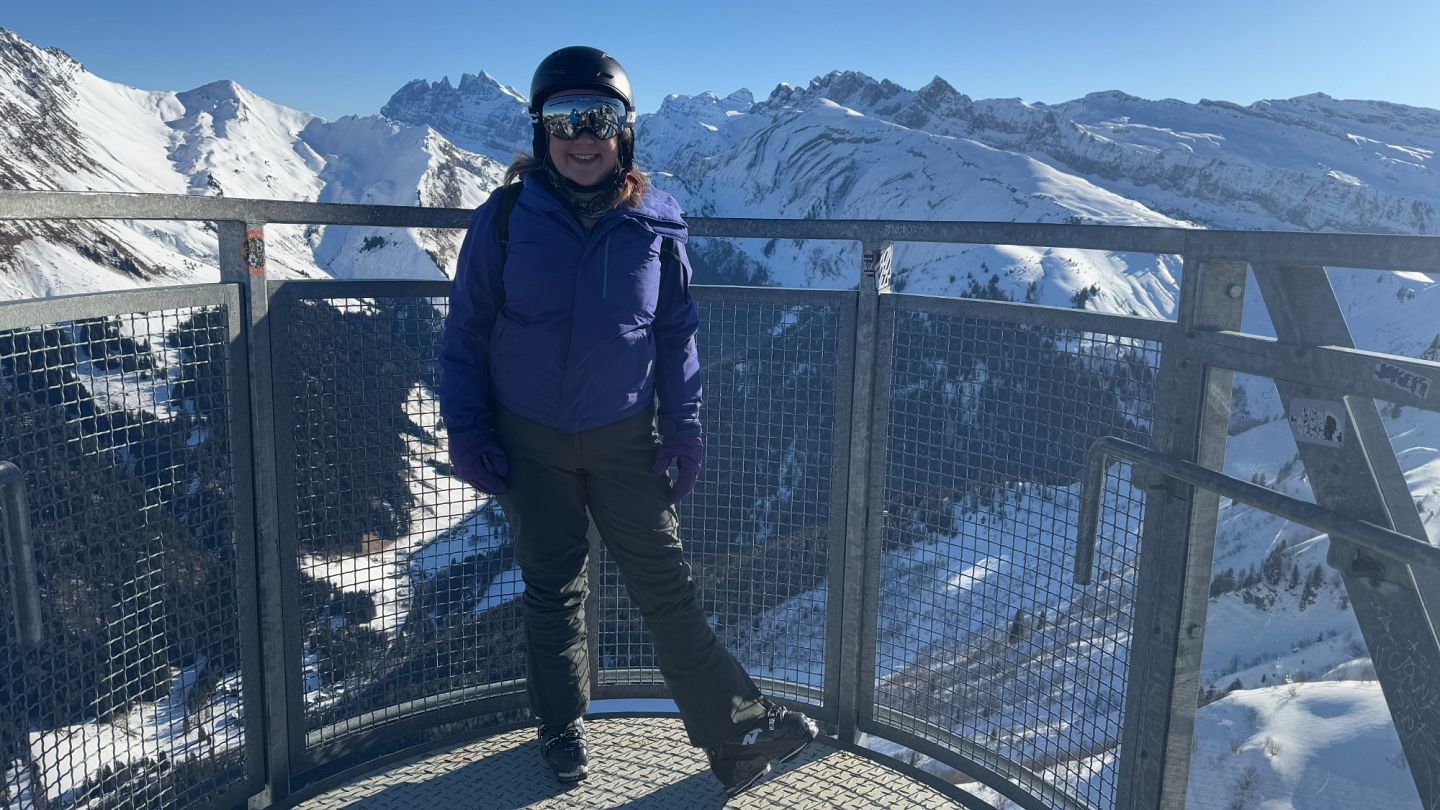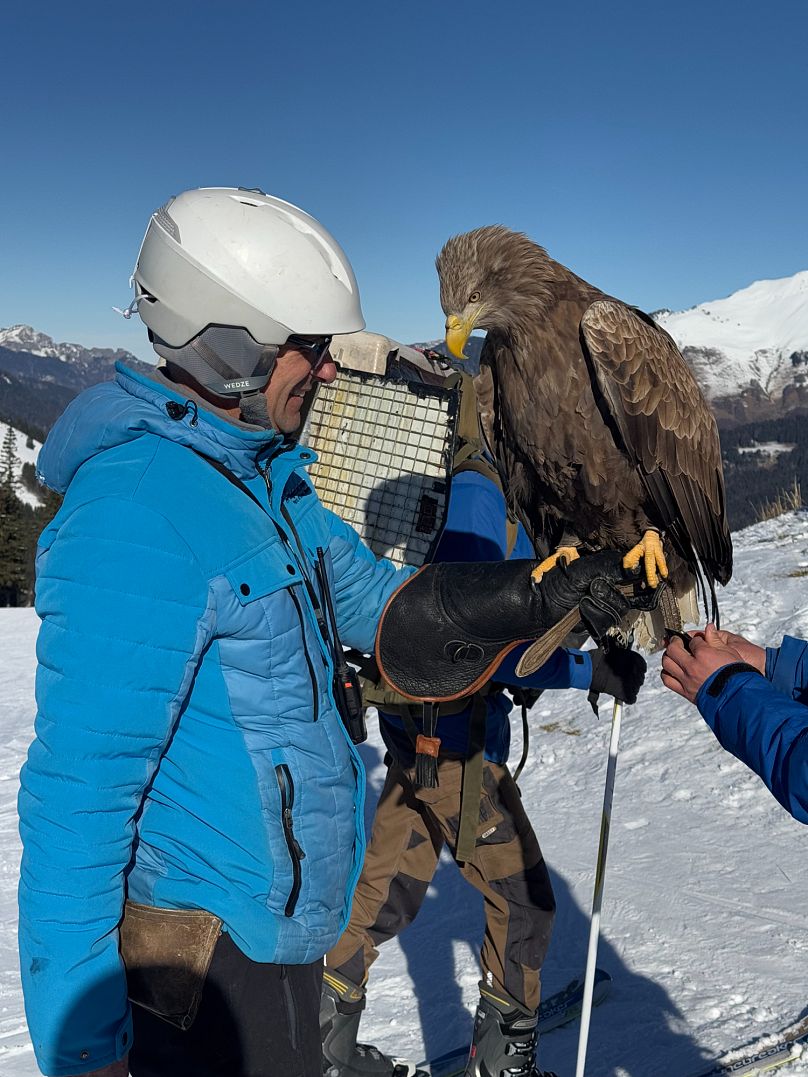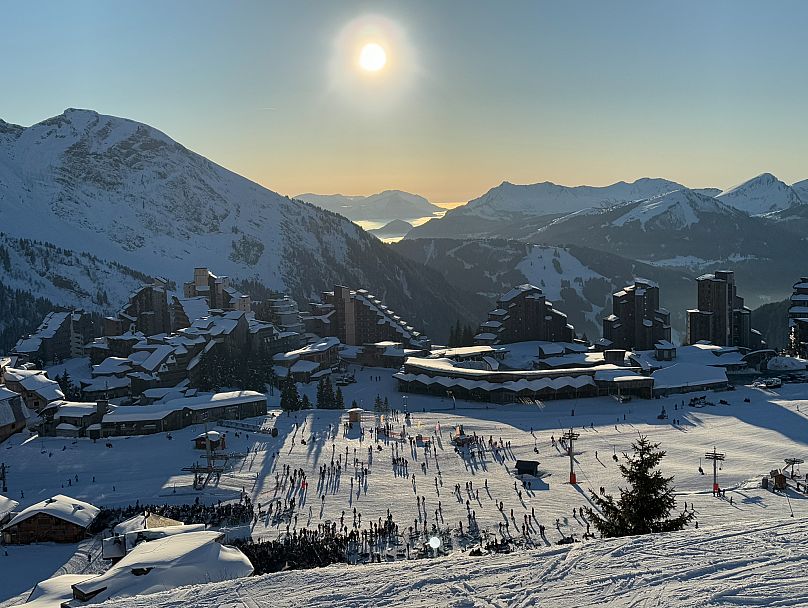
Flying down the pistes takes on something of a new meaning when you’re following a white-tailed eagle and his handler on the sunny slopes of Morzine.
This majestic bird of prey was once nearly extinct in the French Alps. The opportunity to ski with the largest eagle in Europe is part of wider conservation efforts to reintroduce it to the Lake Geneva region and Upper Rhone Valley.
It really is quite the experience, with the bird swooping down the slopes alongside Les Aigles du Léman founder Jacque-Oliver Travers – often to the surprise (and amusement) of other people on the piste.

But it also has a more serious aim of educating visitors on the importance of preserving the alpine environment for future generations.
Sustainability on the slopes
Sustainability and conservation are taken very seriously in the Portes du Soleil ski region. Alongside eco-friendly measures such as hydroelectric power, water-efficient snow-making and biogas produced from local food waste, environmental nonprofit Montagne Verte has been championing sustainable solutions for the Morzine area since 1901.
These efforts can benefit tourists too. The AlpinExpress Pass rewards travellers who reduce their carbon footprint by travelling to the mountains via train with discounts at a range of restaurants, retailers, accommodation and activities, while Montagne Verte’s second-hand clothes shop in Morzine encourages a circular fashion of outdoor and lifestyle equipment.
This commitment to sustainability is perhaps most obvious in the town of Morzine’s snow-covered and higher altitude neighbour, Avoriaz 1800.
Perched on a cliffside plateau that was once home to a handful of herdsmen and their animals, the 1960s purpose-built ski resort has stunning panoramic views across the French and Swiss Alps. It is, in many ways, the ultimate ski-in, ski-out destination, and where I had the pleasure of staying in hillside Chalet Kipnuk, run by VIP SKI.
Architecture in harmony with nature
Avoriaz is famous for its tall, angular and red cedarwood-fronted buildings designed in an organic architectural style that mimics the surrounding mountain landscape. It was revolutionary at the time. The gem in its crown – Les Hauts-Forts 2, designed by Jacques Labro – was only this year designated a historic monument by France’s Ministry of Culture.
Many of the buildings run up the mountainside and face the lower town centre, meaning their front doors are often at the top of the building rather than the bottom. There are also public elevators scattered across the place for people to easily move between the levels.
But perhaps Avoriaz’s most distinguishing feature is that it has always been completely car-free, with people getting around by foot, by ski or by horse-drawn sleigh. Indeed, the jingles of the sleighbells all around you only add to the magic of the place when you literally feel like you’re on top of the world, with the clouds in the valley beneath you.
Skiing the Portes du Soleil region
Now for the skiing. The Avoriaz ski area itself is home to 35 ski lifts, 53 slopes, four snowparks, one boardercross and four snowcross tracks. It is also central to the Portes du Soleil area that spans 12 resorts, including Morzine, 208 ski lifts and 307 runs across the French-Swiss border, with stunning views over Lake Geneva when the cloud lifts.
Obviously, the ideal way to get between them is by ski or by snowboard, although the best way for non-skiers to get between Avoriaz and Morzine is by the Prodains Express cable car, which also dates back to the 1960s and is another highlight of precisely how forward-thinking the designers of the purpose-built resort were back then.
And there really is everything here. With pistes for all abilities, including forest runs, beginner zones, snow parks, free ride zones and more, leisure skiers and advanced ski racers alike are likely more than enough to keep themselves occupied – although only the most expert skiers should try the notorious Swiss Wall, which starts in France and ends in Switzerland.
Beyond the pistes
Avoriaz was the first place I ever tried my hand at ski touring – that is, walking up a mountain on skis and not just skiing down. While it is undeniably harder work, slowly making my way through woods and up routes that would otherwise not be open to regular skiers was certainly a more meditative way of enjoying the beautiful landscape.
Notably, it also fully justified a slap-up meal at legendary apres ski bar Le Folie Douce afterwards.
That wasn’t the only non-ski activity I did here, either. I also tried my hand at fatbiking – electric mountain bikes with wider tyres for snow – which was good fun, although I’ll admit to bottling trying to turn while going downhill for fear of falling into a snow drift. Then there was ‘avokarting’ that involved hurtling down the mountain on a three-wheel cart, complete with hydraulic brakes and, thankfully, a low centre of gravity. It is an experience best described as like Super Mario Kart on snow and was as fun and silly as that sounds.

But my lasting memory of Avoriaz and Morzine will undoubtedly be the stunning panoramas across the French and Swiss Alps.
Skiing with an eagle is one thing, but the closest you’ll get to feeling like you’re flying like one is by admiring the views from the 350-metre-high and 15-metre-long vertiginous glass footbridge at the aptly-named Le Pas d’Aigle (the Path of the Eagle).
Only accessible to skiers and snowboarders by chairlift in the winter months, the 360-degree view stretching from Mont Blanc to Lake Geneva really reminds you why we need to work so hard to preserve these landscapes for generations to come.